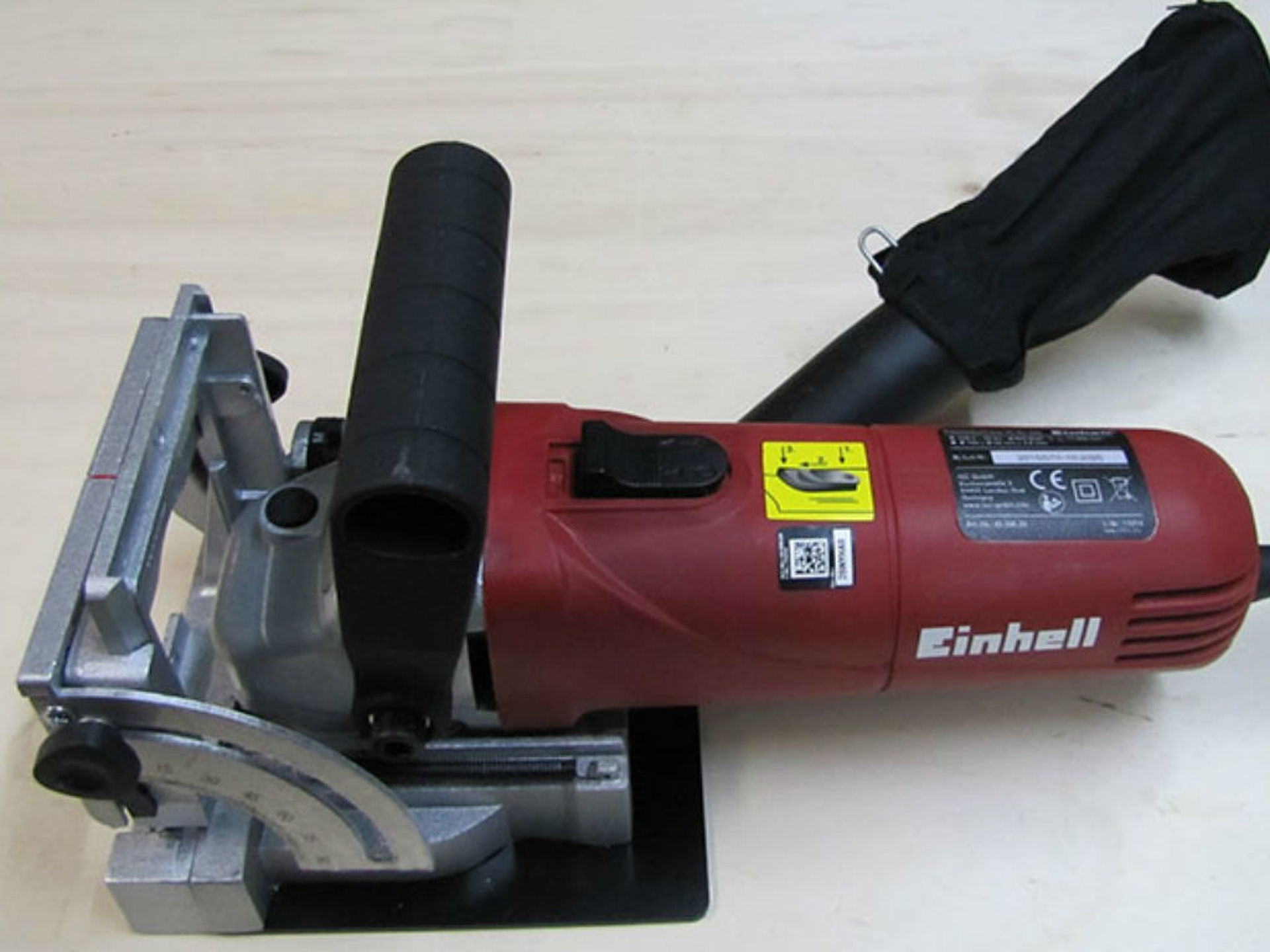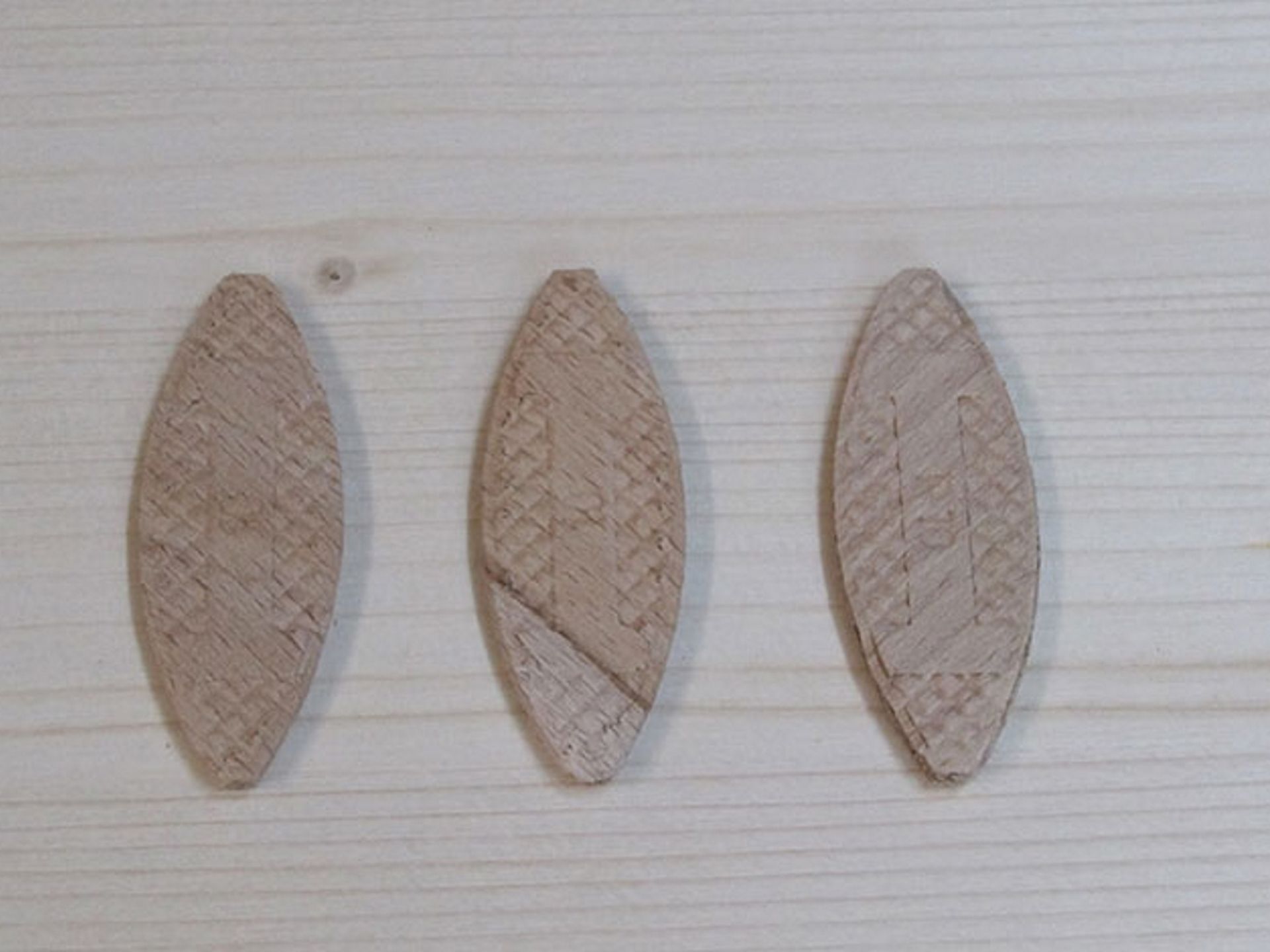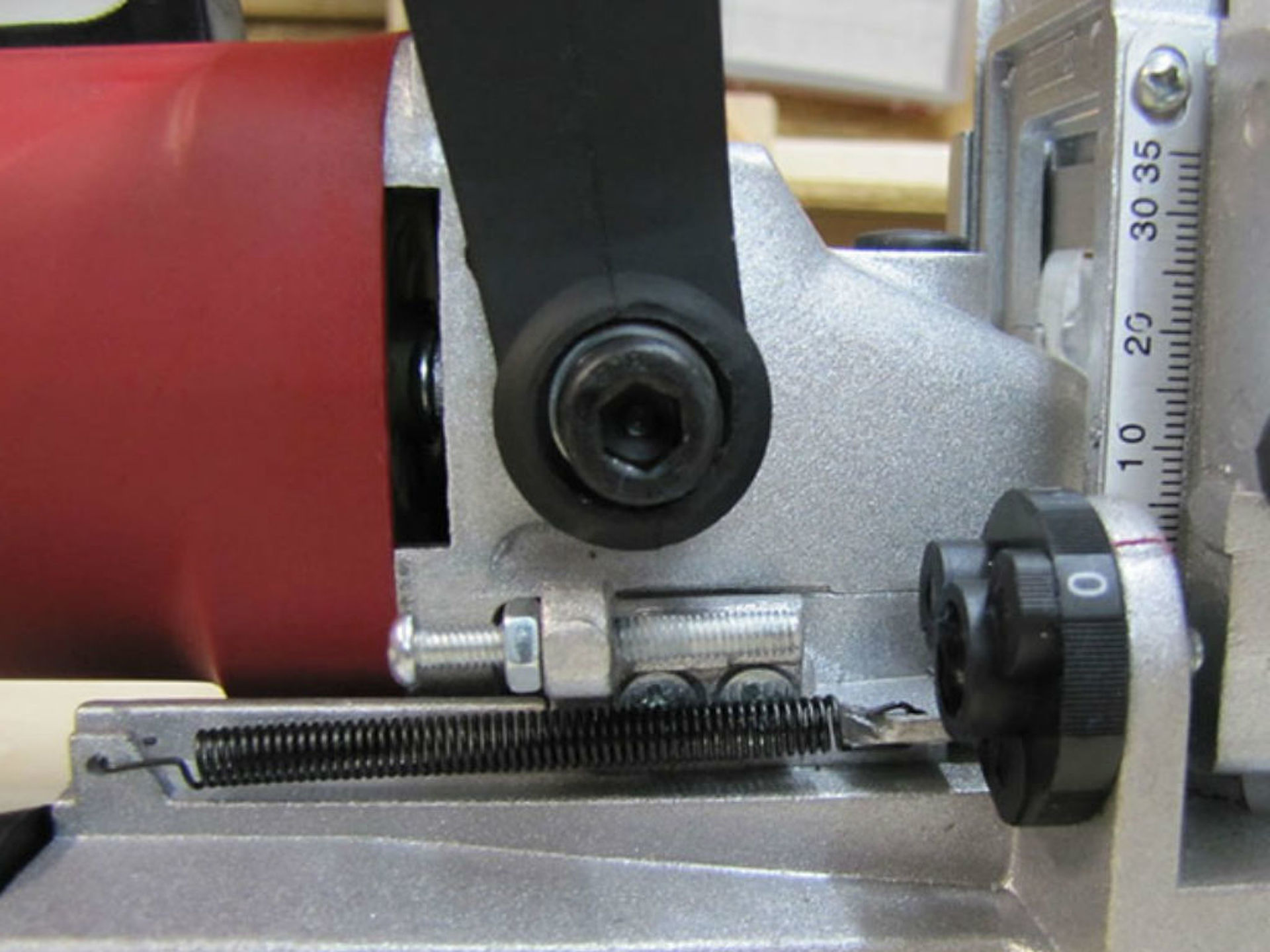Woodworking joints with biscuit jointers
Many different woodworking joining systems have come into being in the last few years to join wood panels. In the DIY space, biscuit joints may well be the easiest and most precise. Biscuit joints have overtaken the round wood dowels in popularity.
The main players
The biscuit jointers
If you want to work with biscuit joints, it is best to use a biscuit jointer. A biscuit jointer actually resembles an angle grinder with an add‐on piece and an extra‐large handle. The speed is also really high at 11,000 rpm and provides a clean milling pattern.

The biscuit joints
A cutting disc is used to make semi‐circular slots in the workpiece. These slots resemble in shape the biscuit joints that come in different sizes. Commonly sold biscuit joints are around 4 mm thick and in oval shape. Biscuit joints are glued on both sides because of the moisture of the glue the joints swell up and hold the workpieces stably in place.

Applications
In general, biscuit jointers are used for butt joints to bind panelled material. For example, the biscuit jointers can be used to make edge‐glued wood panels. But in the DIY world, the biscuit jointer serves as an all‐purpose genius: Be it a trench cut, shadow joint, butt joint, corner joint, T‐joint or mitre joints – anything can be made with this machine.
Advantage of the biscuit joint
The biscuit jointer is set just once at the beginning for height and depth. In general, you can use these settings throughout the project. That speeds up the work. Moreover the height adjustment need not necessarily be precise up to the last millimetre, because the pieces have a slot provided at the same height. The slot can be used to make small corrections in the groove direction. Because the slot is somewhat thicker than the biscuit joint, it is actually possible to make a very small correction across the groove, fix the position using clamps and after the glue is set the joint is stable and fits precisely. In contrast to the otherwise widely used round head dowel, it is not so critical here, to be 100% precise when working. This increases its appeal to DIY‐ers.
We present here a small project to show you how to use the biscuit jointer.
Project: building a tool box
For this project I completely used scrap wood (18mm edge‐glued wood panels, 35 mm round wood). The dimensions of the box were also determined by this You have to make sure, that the grain of the head piece (the one with holes) goes from top to bottom, to get more stability.

After you have correctly sawn all the pieces and drilled both the holes (35 mm diameter), leave them to dry. If the pieces are wobbling or continuously toppling over, I would suggest that you clamp them. Once you have it all arranged, take a pencil and mark the points where biscuit joints must be cut. Make sure that the markings are not too close to the edges. Keep a margin of at least 40 mm from the edge.
The biscuit jointer is now aligned. Open out the mitre fence at 90 degrees.


Adjustment of the biscuit jointer and milling cutter
The small black wheel is for adjusting the depth In this case, I am using size 10 biscuits. Set the wheel such that the red line is at 10.
Arrange all the parts so that you can first make the grooves, during which time the work piece is laid out flat. Now set the biscuit jointer, such that the middle marking (red line) is aligned to your pencil marking.
To ensure that it does not slip out of place; keep your thumb on the mitre fence and push down the work piece at the same time. Now switch the tool on and gently press the machine till the fence is against the work piece. Done! You will carry on the same way for the other markings.
For the base and head pieces the slots must be made across the work piece. For this, the components must be clamped on a work bench or a vice. The procedure is the same, like in other milling.
Gluing of the workpieces and finishing
- For gluing the tool box, start with the top and side pieces.
- Now set the biscuit joint on one side. Make sure that the biscuit joint is placed in the middle of the slots. You can use your markings to guide you.
- Assemble the top and side pieces along with the handle and turn the whole thing upside down. Next apply glue to the underside of the edges, as well as the bottom panel and insert the biscuits.
- Now fix the sides to the bottom panel and clamp everything.
- Let the glue set in for around six hours and then release the clamps. You can do the sanding and finishing now and after that your toolbox is ready.













